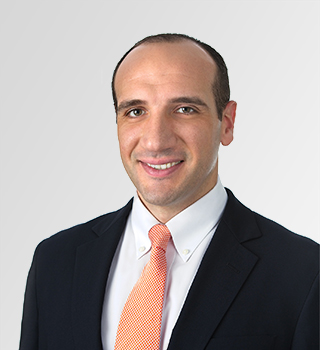On October 1, 2020, the EPA announced the nominees for the approximately 15 additional spots on the TSCA Scientific Advisory Committee on Chemicals (“SACC”). SACC is a group of experts chosen by the EPA to “provide independent scientific advice and recommendations to the EPA on the scientific basis for risk assessments, methodologies, and pollution prevention measures and approaches for chemicals regulated under the Toxic Substances Control Act (TSCA)”. Currently, there are 16 SACC members and there are 10 additional SACC ad hoc Peer Reviewers. The publicly available list of all the nominees for the EPA science panel is provided below, and EPA is accepting comments on all nominees until October 30, 2020.
| William J. Adams | Udayan Apte | Chris H. Babcock |
| Marissa G. Baker | Aaron Barchowsky | Richard B. Belzer |
| Sol Bobst | Robert Budinsky | Michael J. Carvan III |
| Christine F. Chaisson | Jane E. Clougherty | George P. Cobb |
| John Joseph Curley | Jamie C. DeWitt | Michael L. Dourson |
| Katherine Fallace | David V. Gauvin | Daniel A. Goldstein |
| Elliot B. Gordon | Julie E. Goodman | Brian D. Hardin |
| Nitin M. Hate’ | Wendy J. Heiger-Bernays | Maryann Hoff |
| Huixiao Hong | Muhammad M. Hossain | Jon A. Hotchkiss |
| Vijayavel (“Vigay”) Kannappan | Agnes Karmaus | Michael C. Kavanaugh |
| Maureen K. Little | Mark A. Maddaloni | Carmen Messerlian |
| Grover P. Miller | Franklin L. Mink | Peter Moleux |
| Lisa M. Nespoli | Mary Ann Ottinger | Heather B. Patisaul |
| Andrew W. Pawlisz | Laura M. Plunkett | Gloria B. Post |
| Jennifer Przybyla | David M. Reif | Mark Gregory Robson |
| Paul Rosenfeld | Sarah E. Rothenberg | Diego Rua |
| Marc J. Rumpler | Ivan Rusyn | Darius D. Sivin |
| Carr J. Smith | Gavin P. Smith | Jordan N. Smith |
| James L. Stevens | David C. Volz | Katherine Von Stackelberg |
| Charles V. Vorhees | Chris D. Vulpe | Jeffry K. Wickliffe |
| Hong Zhuang |
SACC will have significant influence on EPA’s Risk Evaluations under TSCA, including its ongoing Risk Evaluation for Asbestos. In March 2020, EPA released a Draft Risk Evaluation for Asbestos (“DRE”) that drastically narrowed the gap between the Lifetime Unit Risk (UB) of chrysotile and the amphibole asbestos minerals (e.g., crocidolite, amosite, tremolite, actinolite, anthophyllite). Following publication of the DRE, EPA received comments from more than 60 parties compromised of researchers, medical experts, trade organizations, and asbestos litigation groups. Significant criticism of the DRE has been focused on new threshold standards for exposure to chrysotile asbestos that contradict long-settled conclusions by the scientific/medical community that chrysotile is unequivocally less potent than amphibole asbestos. If finalized in its current form, the DRE could be cited by plaintiffs in response to defendants’ low-dose chrysotile defenses.
The current SACC members have already issued 103 recommendations concerning the DRE. Most notably, it recommended deriving one Inhalation Unit Risk (IUR) for all types of asbestos, not just for chrysotile. This is significant given the long-established opinion of the medical/scientific community that chrysotile is less potent than the amphibole asbestos minerals. Setting one IUR may create a false impression that all the asbestos minerals are equipotent. SACC also recommended the removal of any statements in the DRE describing chrysotile as “biologically inert.” This will further impact chrysotile defenses as medical experts have previously testified that low dose chrysotile exposure is generally insufficient to cause diseases. However, SACC also recommended that EPA re-evaluate its data and modeling as well as collect additional data to support certain conclusions regarding the risks associated with chrysotile. This recommendation is in conjunction with SACC’s position that EPA should re-title the DRE to specify that it is focused on chrysotile or postpone issuing a final Risk Evaluation until a larger evaluation of asbestos can be completed. In totality, SACC’s recommendation illustrates an awareness that chrysotile should be the focus of the DRE.
CMBG3 Law has represented clients in toxic torts matters, especially with respect to asbestos, for many years. We provide the most current legal advice to our clients by staying on top of developments in science, medicine, and regulations regarding a wide variety of substances and products used by consumers every day. If you have any questions or would like more information about the asbestos regulations referenced in this article, please contact Clifford V. Pascarella II, Esq. (email him).


0 Comments